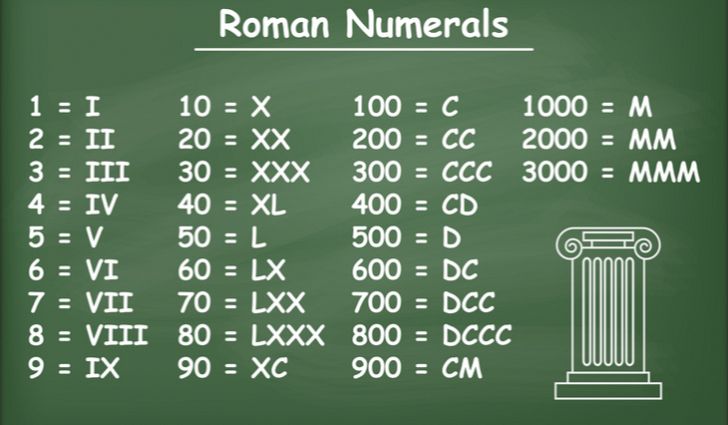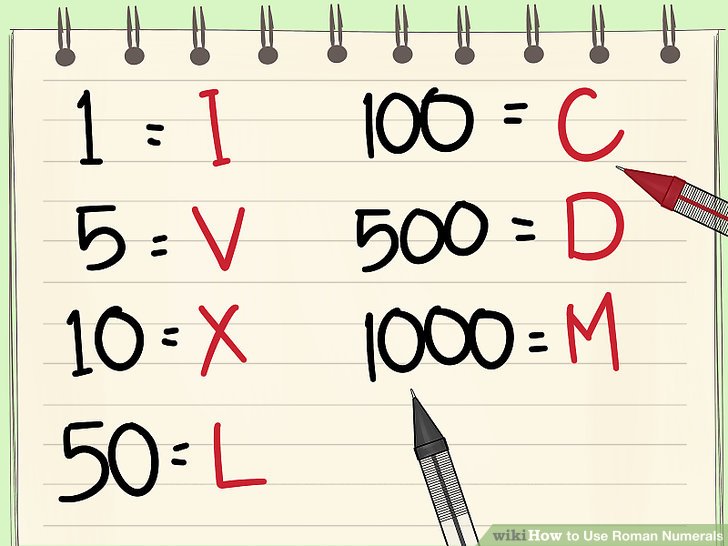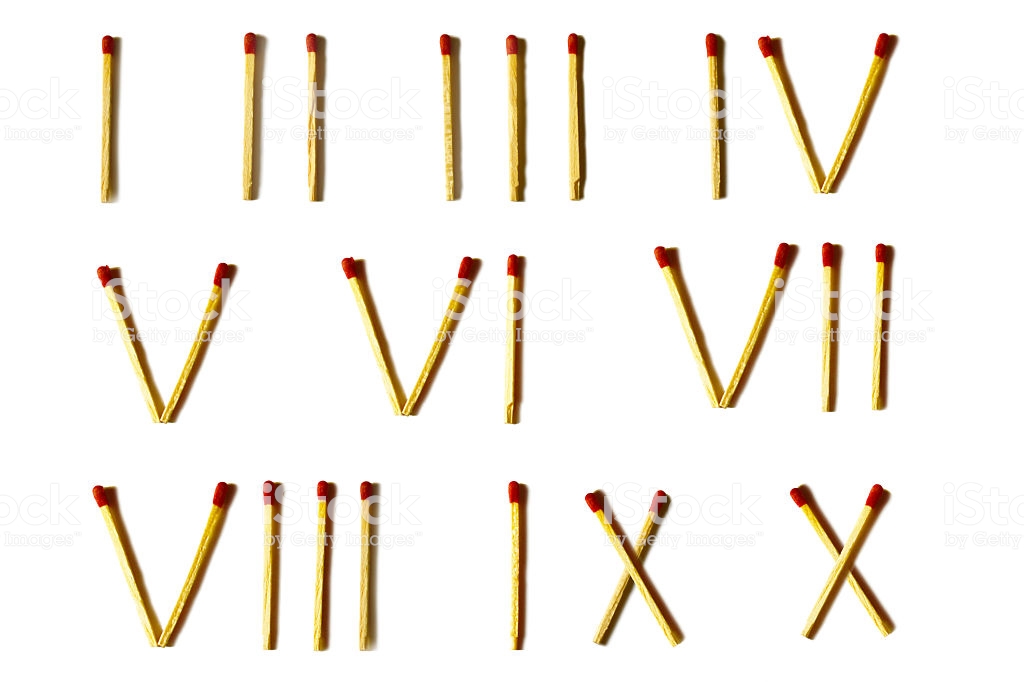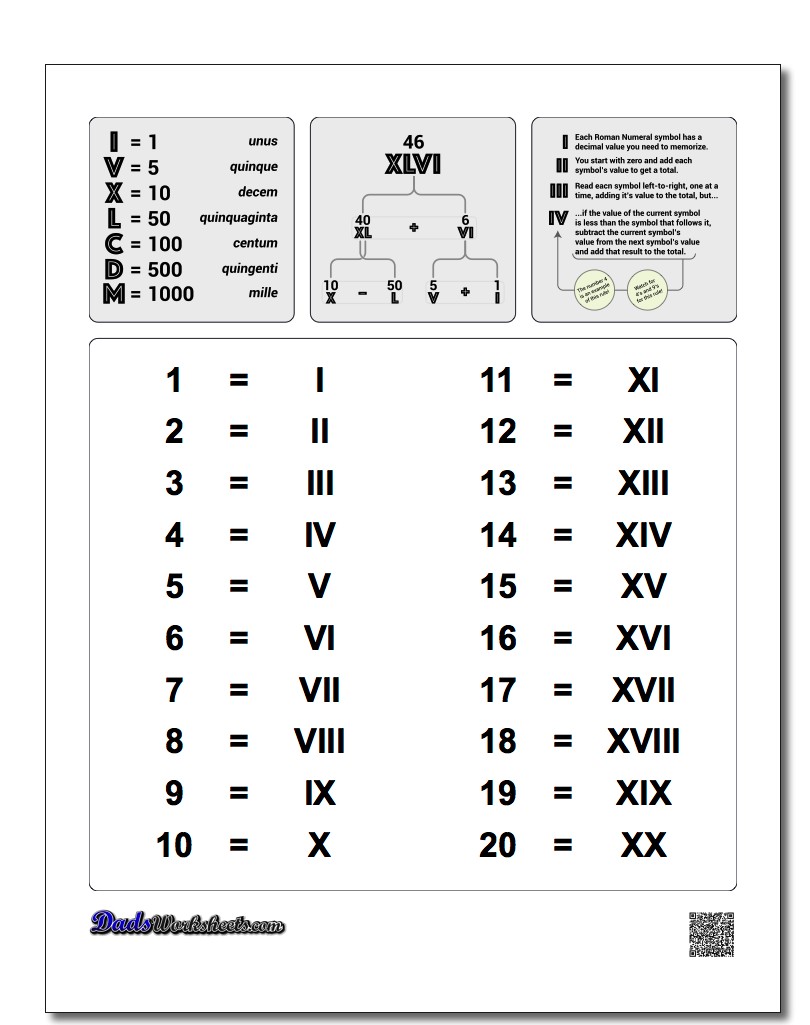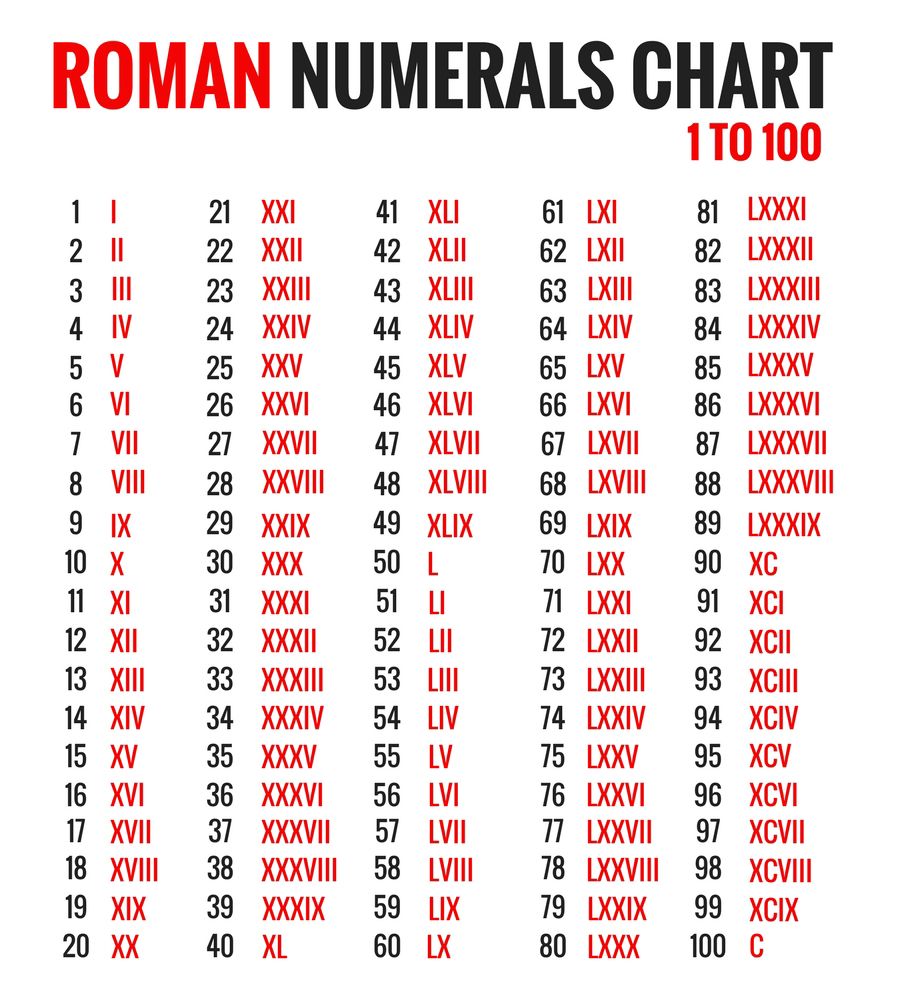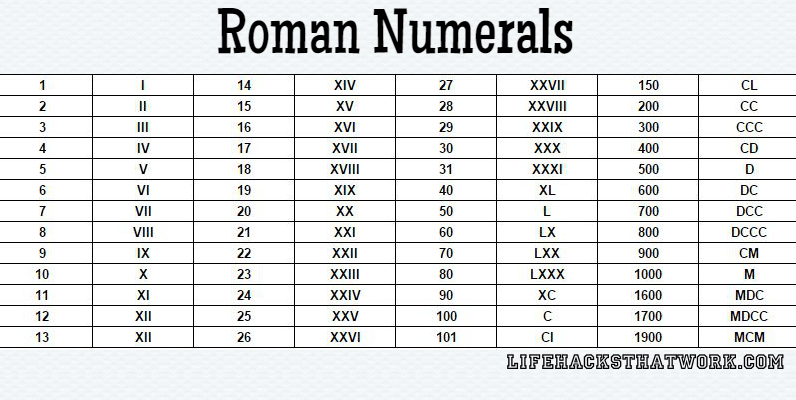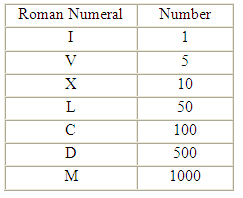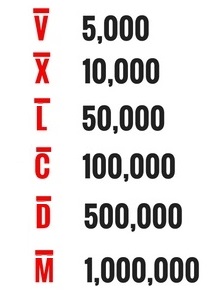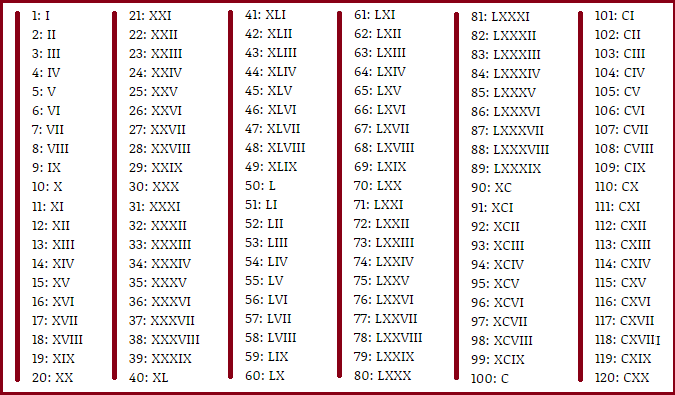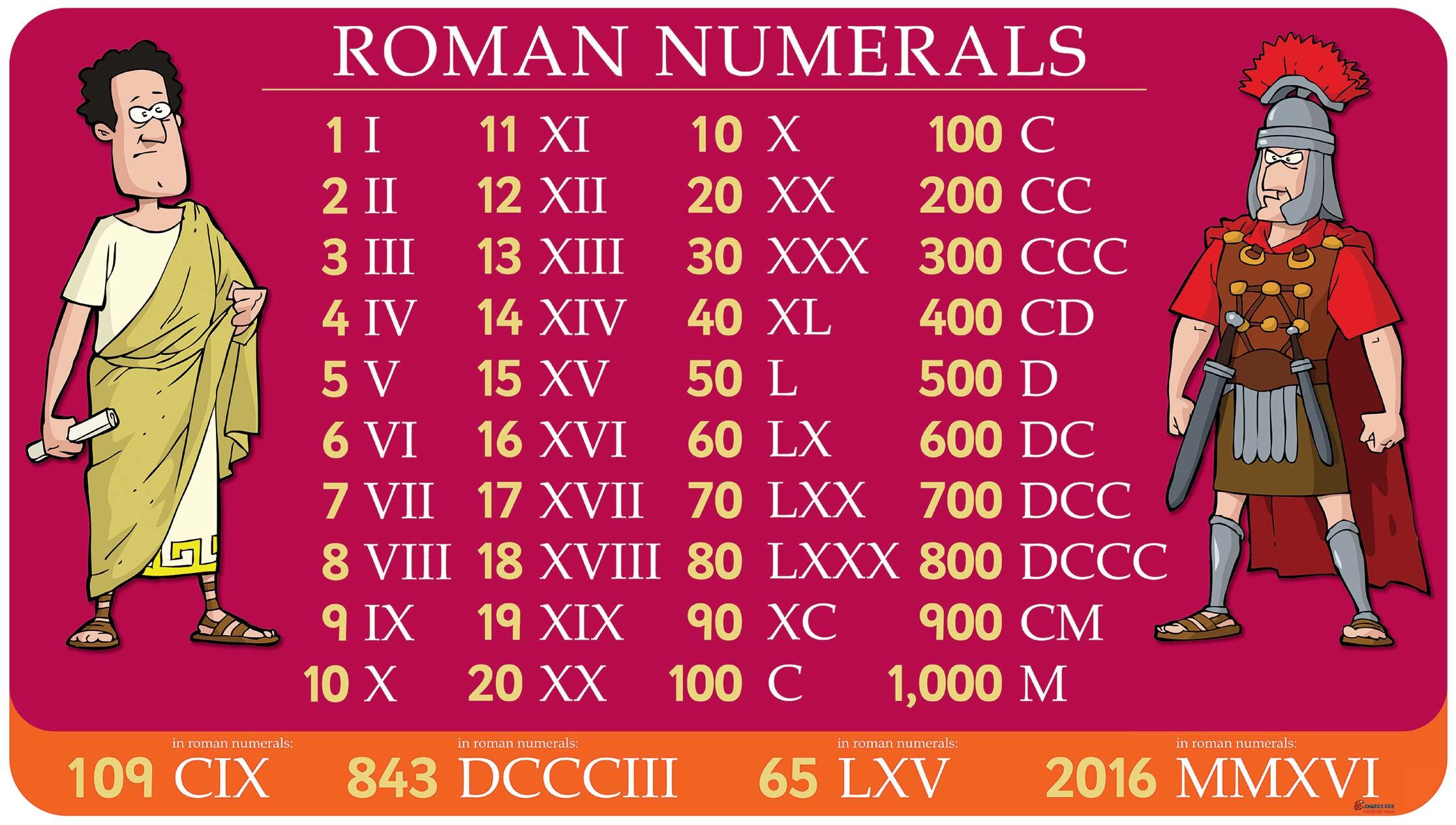Seven different letters represent the roman numerals. All seven letters are: I, V, X, L, C, D and M, which shows the numbers 1, 5, 10, 50, 100, 500 and 1,000. All Roman letters are utilized to make many numbers. For instance, the Roman numeral for 2 is composed as ‘II’, only two times one added together. The number 12 is composed of, XII, which is essentially X + II. In the event that we make this a stride further, the number 27 is composed as XXVII, which when separated looks like XX + V + II.
Convert Numbers into Roman Numerals
Roman Numeral Converter
Roman Numeral Converter for Dates
Roman numerals are written as largest to smallest and from left to right. But, this isn’t generally the case. The Romans didn’t care for four of similar numerals written in succession, so they built up an arrangement of subtraction.
The 3 is in Roman numeral composed as ‘III’, but, the numeral for four isn’t ‘IIII’. Rather we utilize the subtractive rule. The number four is composed of ‘IV’, the numerals for one and five. Since the one is before 5 we subtract it making 4. A similar rule applies to number 9, which is composed as ‘IX’.
You may experience Roman numerals in an assortment of areas today, not simply in Rome! You’ll see Roman numerals regularly where somebody is attempting to make something look more formal or authority. It isn’t unprecedented to see Roman numerals show up in copyright dates, part or segment titles in archives or for huge occasions like the Olympics or the Super Bowl.
On the off chance that somebody has an indistinguishable name from their ancestor’s, Roman numerals will get utilized as suffix to recognize that individual, enabling a name to get conveyed down age to age. So you’ll see individuals who have an “III” or “IV” on their finish of their name to show their identity.
Roman numerals still show up much of the time in science applications, including recognizing periods on the period table of components and for distinguishing the oxidation number of particles.
It’s additionally extremely normal to see Roman numerals on the faces of simple clocks, particularly on the extensive clocks on more established structures. This can be an extraordinary open door for learning Roman numerals and reading a clock!
A current pattern is also for individuals to utilize dates to make Roman numeral tattoos. I trust you’ll think precisely before embraced something like this, and if you continue, be very sure about whatever Roman numeral transformation you’ve made. Regardless of where you discover Roman numerals in the wild, you can simply utilize this Roman numeral converter to make sense of what number they mean. However, that is no reason for figuring out how to peruse Roman numerals yourself. If you also interested in Math then you standard Deviation Calculator.
Is it true that you are confounded of converting the common number into Roman numerals? Here is a tool for it. Roman Number Converter is an online instrument to change over a natural number into a roman number. Simply enter any regular number in the block given and get its Roman numeral instantly.
Roman Numerals 1 to 10
This Roman Numeral 1 to 10 enables you to enter either a Roman numeral or a number in customary Arabic form and it will change over it instantly to the next. It likewise demonstrates an entire parsing of every Roman numeral, a decomposition by putting value and showing how it identifies with a base-10 adaptation of the number.
You can see how helpful the Roman Numeral Converter can be, and it’s likewise simple to utilize. On the off chance that you enter a Roman numeral, it will change over it to Arabic numerals and demonstrate to you the visual representation. By breaking down Roman numerals into their parts, it is easier to see how the digits making up the Roman numeral are added and subtracted to make the more natural number we manage consistently.
Invalid Roman numerals are rejected, however the converter tries to change over it to a “best figure” and supply both Roman and Arabic adaptations. For instance, the Roman numeral “IIII” is an invalid figure for the number four (the right Roman numeral is “IV”) yet the converter will take this info and make it right, and demonstrate to you the relating representation. Additionally, entering an Arabic number will quickly convert to the relating Roman numeral.
Roman Numerals Chart
This Roman Numeral Converter enables you to enter either a Roman numeral or a number in customary Arabic form and it will change over it instantly to the next. It likewise demonstrates an entire parsing of every Roman numeral, a decomposition by putting value and showing how it identifies with a base-10 adaptation of the number.
It’s not hard to discover a case of a Roman numerals outline on the web, yet not many of them are setup for printing. The finely created charts on this page are perfect for your high-resolution printer and would make a fine expansion to works of art or Latin scratch pad or some other accumulations of reference materials.
The chart variations with clues contain a reference for the Roman numeral digits, a concise manual for the standards for perusing Roman numerals. These diagrams will have all that you have to peruse and compose Roman numerals rapidly and effortlessly!
Each Roman numerals chart is unique and has different numbers, so look to see which chart is best suited for you. Many of you will find the 1-100 Roman numeral chart covers most of the numbers in which they are interested, and if you are looking to understand Roman numerals in outlines, clock faces or other everyday instances, the 1-100 chart is perfect. You can pick a chart of Roman numerals 1-1000 if your counting demands are somewhat larger.
1 to 1000 in Roman Numerals
The Roman numeral system is a numbering framework that most likely created as a more formal rendition of the sort of tally mark frameworks despite everything we utilize today.
This numbering framework was initially utilized as a part of antiquated Rome by dealers, sailors, shepherds and others to monitor merchandise and enterprises in trade. It’s utilization today proceeds in a variety of sudden places, and having the capability to decipher Roman numerals keeps on being one of the abilities involving a balanced training.
The symbols utilized for Roman numerals likely developed from a similar kind of tally marks or hash marks we utilize today for basic tallying exercises.
1 in Roman Numerals is I
5 in Roman Numerals is V
10 in Roman Numerals is X
50 in Roman Numerals is L
100 in Roman Numerals is C
500 in Roman Numerals is D
1000 in Roman Numerals is M
You’ll see a theme… Roman Numerals have values that relate to put place value of fives, so there are two Roman numeral symbols in what compares to our one’s place numbers (I and the V, for 1 and 5 separately), two for the ten’s place (X and L for 10 and 50) and two for the hundred’s place (C and D for 100 and 500).
In rules for representing of the Roman-numerals framework, there is no symbol or digit for zero. This system has no place value framework. The digits of lower value are set after or before the digit of higher value. The lower value digits have been added or subtracted from the Higher Value digit. Using the specific guidelines for representing of 1 to 100 Roman-numerals from is given below
Rule 1: The roman digits I, X and C are rehashed upto three times in progression to frame the numbers.
(a) The value of I = 1, value of X is 10 and value of C is 100.
(b) No digit is rehashed in progression more than thrice, i.e., I, X and C can’t be rehashed in excess of 3 times.
(c) The digits V, L and D are not rehashed. The reiteration of V, L and D is invalid in the representing of numbers.
Rule 2: (a) When a digit of lower value is composed to one side or after a digit of higher value, the values of the considerable number of digits are added.
(b) Value of comparative digits are added as per rule 1
Rule 3: When a digit of lower value is composed to one side or before a digit of higher value, at that point the value of the lower digit is subtracted from the value of the digit of higher value. In any case, V is never coming to the left of X.
Rule 4: If we need to compose the numbers past 10 we ought to write the number 10 or groups of number 10 and after that number 1 or 5 as per the case. At that point, these numbers are used to change to the relating Roman numerals. This way you can form 1 to 100 roman numerals
Roman Numerals Calculator
Roman numerals are numbers created in old Rome where letters are written to form numbers. The advanced utilization of Roman numerals includes the letters I, V, X, L, C, D, and M.
Roman numerals calculator is used to adding, subtract, multiply and divide Roman numerals.You can get the answers in Roman numerals and regular numbers. If you will add or Subtract Roman Numerals, step by step Roman numeral calculator define the answer.

